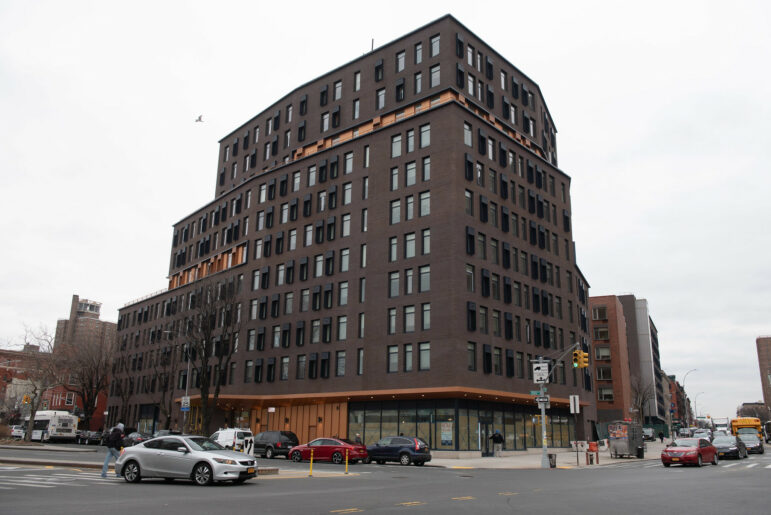“What we need is not haphazard compromise through gritted teeth, but the embrace of a coherent policy to safely and affordably house more New Yorkers. We need to build more housing and help more people afford it.”

Michael Appleton/Mayoral Photography Office
An affordable housing development in the Bronx.Will New York’s legislature “do something about housing” this session? Maybe—if we understand what “doing something about housing” means.
Last year, Gov. Kathy Hochul proposed a bold agenda to increase the availability of housing throughout the state, while many legislators focused on safeguards for renters. What we need is not haphazard compromise through gritted teeth, but the embrace of a coherent policy to safely and affordably house more New Yorkers. We need to build more housing and help more people afford it.
This will take more than political horse trading. A grab bag of actions can take us one step forward but two steps back. To make real progress requires coordination and attention to detail.
Residents of New York are paying through the nose for an inadequate supply of housing—and as a result we are losing population and representation in Washington. To escape this vicious cycle, we must acknowledge that we can’t make housing more affordable without making more housing generally.
To make it easier and less costly to build and operate housing, we can aim to rein in onerous insurance rates that discriminate against affordable housing. We can scrap antiquated state restrictions that prevent New York City from setting the maximum size of a residential building, and we can allow New York City to legalize types of accessory dwelling units and three-family homes—lower-cost ways of housing New Yorkers. The law can stop treating new housing in New York City like it’s the problem rather than the solution.
We also need to fill the void left by the expiration of the 421-a tax incentive program and relieve the high taxes imposed on new multifamily rental housing—creating a streamlined, as-of-right path for churning out mixed-income apartments of all shapes and sizes in neighborhoods across the city, as envisioned by the Adams administration’s proposed zoning reforms. A new program can produce low-income units in high-cost neighborhoods, though in other parts of the city, this is unlikely to be feasible. A coordinated housing policy, however, can address this.
New affordable housing is hugely important, but it is also only a fraction of a percent of all housing in New York City. Lower-income residents can tap into the much larger universe of existing housing when rental vouchers are available to make up the gap between the rent charged and the rent they can afford to pay. But vouchers are only effective if there’s housing for recipients to move into. Without more housing, issuing more vouchers will just drive up rents for lower-cost apartments, leaving new people out in the cold.
A well thought out policy can make the sum of these programs greater than the parts. Expand the supply of rental vouchers, issuing new vouchers only as new housing supply comes online. Enact a new tax program to boost the construction of housing that includes low-income units in high-cost areas, while in other areas including units that rent at a level that can be reached with vouchers, as the New York Housing Conference has suggested. This coordinated approach can both ease the housing shortage and directly support lower-income New Yorkers.
But it will only work if we keep state and city programs from acting at cross purposes.
For nearly a decade, the city has applied the Mandatory Inclusionary Housing program, or MIH, to rezonings intended to produce housing. (Full disclosure: I worked on the creation of this program.) MIH allows new housing to be built only if a significant share is set aside as affordable. The city’s own analysis shows that it depends on a supporting tax incentive—and that without one, rezoning with MIH will actually decrease, not increase housing production.
Today, the city cannot increase the supply of mixed-income housing through rezonings without state action to replace 421-a. But even before its expiration, 421-a was set to expire every few years. Building the city’s long-term growth plans for housing on a state program that expires every few years is like running a life-support system on off-brand double-A batteries. A new program cannot be set to expire in MIH areas, and the city should be given authority to make limited changes to keep the program working. We can’t afford to let financial bumps or legislative inaction derail the city’s long-term plans for housing.
We won’t do everything we need to escape our housing crisis in a single year. But if we coordinate our actions around bottom-line policy goals, we really can “do something” to house more New Yorkers, better.
Slatkin is the executive director of the Citizens Housing & Planning Council (CHPC).








